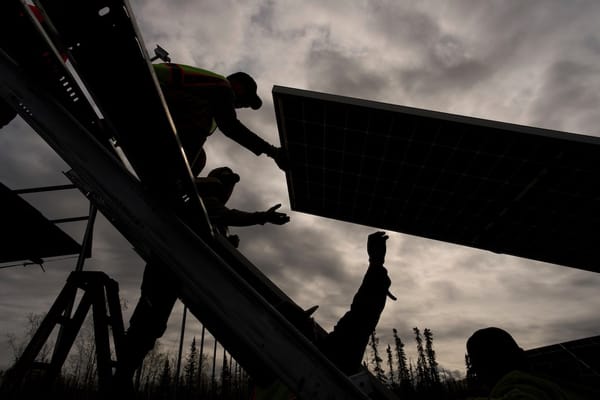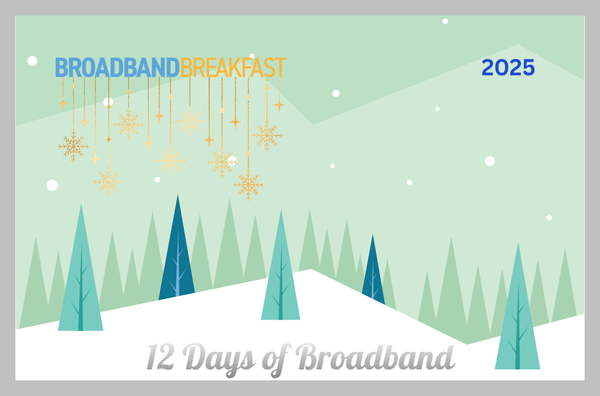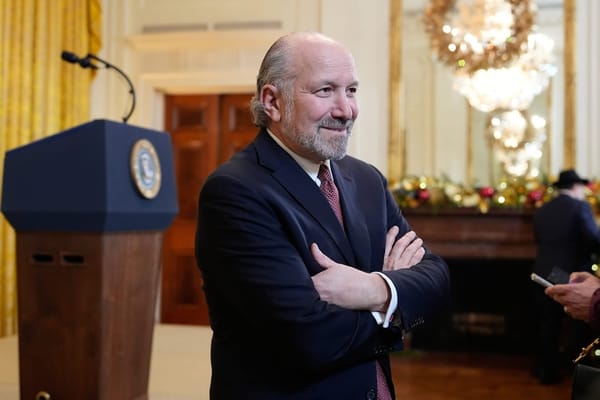Starlink Reveals the Government’s Problem of Picking Winners and Losers
The government has a history of preferencing government-owned networks at the expense of private alternatives.
Nate Scherer

SpaceX is in the news again and this time because its satellite internet system Starlink is offering temporarily free service to those impacted by Hurricane Milton.
While other communications technologies often rely on ground-based infrastructure that can be disrupted by poor weather conditions such as hurricanes, Starlink can quickly connect consumers through its system of Low Earth Orbit (LEO) satellites. This is a good reminder of the range of broadband technologies, and why policymakers should not be picking winners and losers in broadband to fund deployment.
In an ideal world, the government would not play favorites. But that simply isn’t reality. The government has a history of preferencing government-owned networks at the expense of private alternatives. These preferences defy good policymaking when they tilt funding distributions toward fiber, or any other technology, in infrastructure deployment. Starlink is but the latest victim.
Just last month, Federal Communication Commission Chair Jessica Rosenworcel implied that Starlink was monopolizing the satellite commercial space. “We do have one player that’s got almost two-thirds of the satellites in space,” she lamented at the recent U.S. Chamber of Commerce Global Aerospace Summit, likely referencing a tweet by SpaceX CEO Elon Musk celebrating Starlink’s 7,000th satellite launch.
Those comments are as puzzling as they are contradictory. After all, part of the Commission’s rationale for excluding Starlink from previous broadband subsidy programs was that it believed the company was not capable of meeting even basic performance benchmarks. To the FCC, Starlink is both too successful and not successful enough.
Last year, the FCC doubled down on its earlier rejection of Starlink’s application for $885.5 million in Rural Digital Opportunity Fund (RDOF) program subsidies, writing that “Starlink had not shown that it was reasonably capable of fulfilling RDOF’s requirements to deploy a network of the scope, scale, and size required to serve” the 643,000 American rural homes and businesses that it had promised to connect. Elaborating on the Commission’s rationale, Rosenworcel stated that the Commission had a “responsibility to be a good steward” of taxpayer money and that “this applicant failed to meet its burden” since it didn’t “meet basic program requirements.”
Those basic program requirements were that RDOF awardees show they had the technical and financial ability to serve the locations where they received subsidies. In Starlink’s case, the company needed to offer broadband service to customers at speeds equal to or better than 100 Megabits per second (Mbps) for downloads and 20 Mbps for uploads.
A window of time was provided to meet that criteria—participants had three years to have 40 percent of their deployments in this range—which Starlink was on track to do and had already demonstrated in a series of submissions to the FCC in 2021 and 2022.
Yet, as Commissioner Brendan Carr pointed out in his dissent to the rejection announcement, the Commission revoked Starlink’s RDOF award money anyway by applying an “entirely new standard of review” that required the company to demonstrate that they could provide high-speed internet to all locations today. Commissioner Nathan Simington noted that this standard was not applied to other RDOF recipients, many of whom “deployed no service at any speed to any location at all.”
The entire ordeal reeks of bias, especially considering Starlink already had nearly half a million subscribers by June 2022—a month before FCC’s rejection—and subscribership was still growing as the company launched dozens of new LEO satellites every month.
Ironically, Rosenworcel now acknowledges that Starlink has a “very high portion of internet traffic” and believes having “more actors in low-Earth orbit” can unlock competitive benefits despite her own Commission previously expressing skepticism that LEO networks can “deliver real-world performance to consumers” at required thresholds.
The application denial is unfortunate for thousands of Americans residing in hard-to-reach locations and disaster areas who stood to benefit from the service that Starlink would have provided. It is also unfortunate for American taxpayers who would have seen 643,000 homes and businesses be connected for roughly $1,134 per location over ten years.
Taxpayers are often asked to spend more than necessary to connect Americans. For instance, the U.S. Department of Agriculture’s ReConnect broadband deployment program has previously awarded millions of dollars of grants to companies deploying fiber to homes at costs well above $100,000 per home.
Different technologies serve different market needs—and all of them have a role to play in connecting communities. That is precisely why the government should not be in the business of choosing winners and losers in the broadband business. Starlink is just the latest example of why.
Nate Scherer is a Policy Analyst with the American Consumer Institute where he researches and writes about a diverse range of consumer issues. He previously served as a Policy Analyst at the Reason Foundation and has also worked for several other nonprofits including the Texas Public Policy Foundation and the Leadership Institute. More recently, he worked an educator for Fairfax County Public Schools and performed research for Georgetown University’s Edunomics Lab. This Expert Opinion is exclusive to Broadband Breakfast.
Broadband Breakfast accepts commentary from informed observers of the broadband scene. Please send pieces to commentary@breakfast.media. The views expressed in Expert Opinion pieces do not necessarily reflect the views of Broadband Breakfast and Breakfast Media LLC.
Editor's Note: This Expert Opinion has been updated to reflect the NTIA's speed standard for broadband deployment.










Member discussion